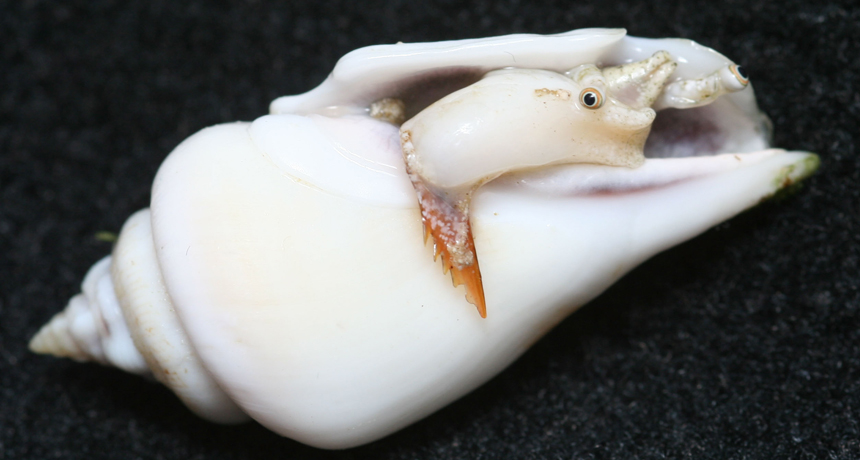Gassed snails can’t jump
Exposure to extra carbon dioxide slows or stops the animals' defense tactics

Sea snails, such as this one, use footlike limbs to jump out of the way of attacking predators. But high levels of carbon dioxide can slow or stifle the snails' escape tactic.
© Sue-Ann Watson






